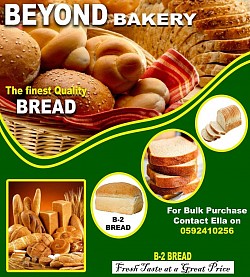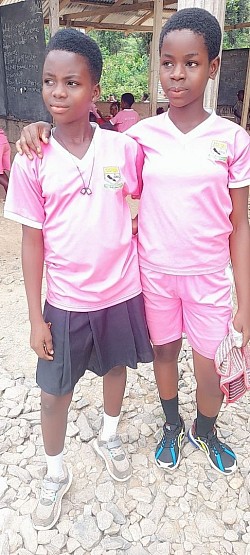Educative, creative art, entertainment, sports and more
Your Academic Success
ABOUT THE AUTHOR
QUAINOO MANUEL DADZIE is the writer of this book, which considering where you’re reading this, makes perfect sense. He is a student of Breman Asikuma Senior High School. He is best known for writing Information and Communication Technology. He also enjoys six months Computer studies at Atlantic International University Online Program, while he was a student at Atlantic International University Online Program He is a consistent honor student, and while he was under me, he excelled as the top student. Other instructors and professors in the same department talk highly of his performance. In addition to him being a dedicated and hardworking student. He does the tasks given to him with a positive attitude. He is able to establish great research and wonderful explanation with people of all ages and has excellent written and verbal communication skills.
QUAINOO EMMANUEL’S CV
Post Office Box 181
Breman Asikuma
Tel: 0541386330/0507694048
PERSONAL PREOFILE
DATE OF BIRTH : 11th May, 1994
PLACE OF BIRTH : Breman Asikuma
HOME TOWN : Gomoa Apam
NATIONALITY : Ghanaian
SEX : Male
MARITAL STATUS : Single
LANGUAGE SPOKEN : English, Fanti and Twi
CAREER OBJECTIVES
To contribute effectively to the growth of an organization with enabling environment for personal development.
EDUCATION
Breman Asikuma Senior High Sch. Breman Asikuma
WASSCE 2014
Mumford Comm. ‘B’ JHS Mumford
BECE 2011
WORK EXPERIENCE
2021 – up to date Enchill Educational Complex Ayanfuri
Teaching
2020 -2021 NGV Hotel Ayanfuri
Laundry Attendant
2019 - 2020 Faith Academy Prep. School Wassa Nkonya
Teaching
2017 – 2019 Glorious God Academy Ayanfuri
Teaching
2016 – 2017 Unity Preparatory School Breman Asikuma
Teaching
2014 – 2016 Ghana School Bag (Krokrobitey Institute) Accra
Machine Operator Assistance
LEADERSHIP
• Sports teacher and chaplaincy ( Glorious God Academy ) Ayanfuri 2017-2019
• Sports Teacher (Unity Preparatory School) Breman Asikuma 2016-2017
PERSONALITY
• Ability to work extra hours
• Good interpersonal relationship
• Result oriented
• Trust worthy
• Public Relations
• Physical and mental alertness
• Firm and Fair character
• Ability to work under pressure,
• High level of honesty and integrity.
• A sense of dedication and loyalty to the cause of the Commission.
• Good team player.
• A sense of political neutrality.
TECHNICAL COMPETENCE
• Experience in electoral work
• Appreciable level of literacy and numeracy skills
• Computer proficiency
• Quantitative and analytical skills.
INTERESTS
• Sports ( Football)
REFERENCES
The Headmaster
Mr. Essuman Stephen
Unity Preparatory School
P. O. BOX 134 BR
Breman Asikuma
Tel: 0249-184397 The Headmaster
Mr. Opoku Owusu Oscar
Glorious God Academy
P.O.BOX 348 DCLM
Ayanfuri
Tel: 0505-148518
The Headmaster
Amoasi Francis
Faith Academy
P. O. BOX 347
Wassa Nkonya
Tel: 0244-272567
The manager
Mr. Abekeh Louis
NGV Hotel
Tel:
CONTENT
PREFACE
The recent of the introduction of information and communication technology syllabus by Curriculum Research and Development Division (CRDD) of the Ghana Education Service coupled with the dearth of the subject text books has paved way for the writing of the pamphlet. It is specially designed according to the new ICT curriculum to assist you in your study of the subject.
This has been done to make it easier for teachers and the student to keep up with the coverage of the syllabus.
It is our prayers that this book would meet the needs of both the teachers and students to study effectively.
INTRODUCTIONS
Those who knows how much attention has been given to late years in secondary schools and tertiary institution in Ghana and the African Continent as a whole to the teaching of new technology in computer will be disposed to examine with interest and respect a computer science which has already been received with much favor in this continent.
No opportunity could be better than recommendation this book to the notice of student and teachers. For at long length we are awaking from our deplorable indifference to the studies and teaching of computer. We are beginning to appreciate the value of computer science as means towards general culture, as necessary in most business departments and as indispensable in foreign commence and technology.
We already possess many computer text books, some bad, some good, but few of great excellence. I believe that a full and a fair examination of this text will compel every competent judge to pronounce it the best of it kind has yet appeared.
In their modest preface, the authors make no clam to the discovery of any new method, but the merit of their book is nevertheless, of the very highest order.
ACKNOWLEDGEMENT
First and foremost, I would like to thank God Almighty for giving me the strength, knowledge, ability and opportunity to undertake this research study and to persevere and complete it satisfactorily. Without his blessings, this achievement would not have been possible.
I would like to thank my teachers, my dear editor, creative writing classmates and my entire family without whose help this book would never have completed
TABLE OF CONTENT
Short note of computer
Computer literacy
History of Charles Babbage
History about Bill Gate and His Microsoft Company
Computer Science
Introduction to ICT
Difference between ICT and ICTs
Information
Communication
Technology
JHS 1
CHAPTER 1:
FIRST YEAR – TERM ONE
1. Introduction to personal computers
2. Parts of personal computer
3. Keyboard and mouse skills Review
4. Turning on and off the computer
5. Health and safety in using I.C.T. tools
6. Introduction to manipulative keys
7. Learning I.C.T. Tools
CHAPTER 2:
FIRST YEAR: TERM TWO
1. INTRODUCTION TO DESKTOP/ GRAPHICAL USER INTERFACE
2. Launching an Application
3. Window management
4. Introduction to Word Processing Windows
5. Editing Word Processing Document
CHAPTER 3:
FIRST YEAR TERM THREE
1. Formatting Text in Word Processing Document
2. Managing File
3. Computer Virus
4. Copyright information infringement
5. The internet and World Wide Web
6. Technologies Used to access the internet
J.H.S TWO
CHAPTER 4
SECOND YEAR TERM ONE
1. Basic Storage Devices of a Computer
2. Basic Input and Output Devices
3. Creating Folders
4. Typing Keyboard Symbols
CHAPTER 5:
SECOND YEAR TERM TWO
5. Internet Etiquette (Netiquette)
6. Creating E-mail Account
7. Editing Word Processing Document
8. Formatting Text in Word Processing
CHAPTER 6:
SECOND YEAR TERM THREE
9. The Use of the Drawing Toolbar in Word Processing.
10. Inserting Pictures in Word Processing Document.
11. Printing a Word Processing Document.
12. Browsing through Web Pages Using Hyperlinks
13. Accessing Information from Educational Software.
J.H.S 3
CHAPTER 8:
THIRD YEAR TERM ONE
1. Locating and Transferring Information from Website to Word Processing Document
2. Composing and sending E-
HOW TO PASS YOUR BECE SO EASILY AND GET 6 ONES?
How do I pass the BECE so easily? And how can I score an aggregate of 6 in the BECE? . These are the questions all candidates want an answer to as the next BECE draws nearer. This post contains all the secret answers you are looking for right now.
The Basic Education Certificate Examination (BECE), organised by the West African Examination Council (WAEC), is a crucial and final assessment for third-year Junior High School (JHS) students across West Africa, including Ghana. This examination plays a huge role in determining a student’s next academic path, especially regarding senior high school placements.
Traditionally, the BECE is written annually around June. However, due to disruptions caused by the COVID-19 pandemic, the timetable has seen a few changes. For 2024, the exams are scheduled to take place from Monday, July 8th, through Friday, July 12th.
Students sitting for the BECE are required to write several subjects. These are grouped into core, elective, and optional categories.
Core subjects include English Language, Mathematics, General Science, and Social Studies, along with Religious and Moral Education, Career Technology, and Creative Arts and Design.
For elective subjects, students must write a Ghanaian Language—specifically the one taught in their school.
Additionally, there are optional subjects such as French, Computing, and Arabic for students who choose to pursue them.
WAEC uses a grading system divided into nine grade points. Students’ final aggregates are calculated based on their performance in the four core subjects and two other elective or optional ones. A strong performance across these subjects can make a significant difference.
Now, how can you prepare effectively for the BECE and increase your chances of excelling?
Here are ten smart strategies that you should follow both before and during your examinations:
HERE ARE TEN SMART STRATEGIES THAT YOU SHOULD FOLLOW BOTH BEFORE AND DURING YOUR EXAMINATIONS:
1. Solve Past Questions
One of the best ways to prepare is by practising past BECE questions. Yes, the volume may seem overwhelming at first, but tackling past papers gives you a clear understanding of the exam structure and commonly repeated question types. You’ll start recognising patterns in how questions are asked, making you better prepared to handle anything that comes your way.
2. Create a Study Plan
Good preparation starts with having a solid study plan. Some people study better alone, while others prefer studying in groups. Find out what method suits you best and stick with it. Don’t simply copy your friends’ study habits if they don’t work for you. Personalise your learning journey.
3. Get Help When Necessary
No one is perfect at everything. If you realise you’re struggling with a subject or a topic, don’t hesitate to ask for help—whether it’s from a teacher, a classmate, or even a family member who’s knowledgeable. Collaborating with friends who excel in specific areas can boost your confidence and understanding.
4. Take Your Mock Exams Seriously
Mocks are not just another school event;; they are crucial! These practice exams simulate the real thing and give you a chance to assess your preparedness. Take every mock exam seriously because it can reveal the areas where you need extra attention before the main BECE.
READ THIS: How to Easily Pass WASSCE 2025 in one session
5. Avoid Last-Minute Learning
Cramming all your notes a few days before the exam isn’t an effective strategy. Good preparation starts right from the first day you step into JHS1. By studying consistently over time, you’ll retain information better and avoid the pressure and panic that come with last-minute revision.
6. Manage Your Time Effectively
Time management is critical during an exam. Once you get your question paper, quickly scan through and divide your time based on the number of questions. Always attempt the ones you’re confident about first, then return to the tougher ones later. If you’re answering multiple-choice questions, skip tricky ones at first and come back to them after finishing the easier ones.
7. Follow All Exam Instructions
Carefully reading the instructions at the beginning of each paper can save you from making costly mistakes. Always use the time between receiving the paper and hearing “start work” to read the instructions thoroughly. Understanding exactly what is being asked is the first step toward answering correctly.
8. Do Not Rely on Leaked Questions (“Apor”)
Many students fall into the trap of depending on so-called “apor” or leaked questions. This approach is risky and can set you up for failure. You should focus instead on studying broadly. Solving practice questions that are rumoured to be likely for the exam is fine, but never depend solely on them.
Advertise with us
ALSO READ THIS: Download all 2024 BECE Questions and Marking Schemes for revision
9. Write Clearly and Legibly
Your answers might be brilliant, but if the examiner cannot read your handwriting, you risk losing marks. Always aim to write neatly and legibly during the exam. Once you complete your paper, take a few minutes to review your work and correct any careless mistakes.
10. Stay Calm and Relaxed
Anxiety is a silent killer during exams. It can cause you to forget even the things you studied well. Before and during your exams, stay as calm and relaxed as possible. Deep breathing exercises, listening to calming music, and positive self-talk can help manage exam stress. Remember, confidence comes from preparation.
100 OBJECTIVES TEST
BECE Education100 Likely Objective Test Questions for the 2025 BECE Computing PaperWISDOM K.E HAMMOND June 8, 2025
Are You Preparing for yhe 2025 BECE Computing paper? In This post, We have our 100 Likely Computing Questions for 2025 BECE as well as their answers.
As students gear up for the 2025 BECE Computing exam, having access to likely objective test questions can be a game changer. This collection of 100 questions has been carefully crafted based on the Common Core Curriculum of Ghana for basic 7-9 students. Each question includes four alternatives, labeled a to d, ensuring a variety of challenges.
Structure of the Questions
The challenges in this set range from critical thinking to direct applications, catering to learners across grades 7 to 9. Among these, the 2025 BECE computing likely questions are aimed at enhancing understanding and encouraging deeper cognitive engagement. Questions are designed not only to assess knowledge but also to inspire critical thinking.
Trial Question Examples and Correct Answer Justifications
Consider the following examples:
1. What is the main function of the CPU?
a) Storage
b) Processing
c) Input
d) Output
**Correct Answer: B**
Explanation: The CPU, or Central Processing Unit, is primarily responsible for processing data and executing instructions.2. Which of the following is not an input device?
a) Keyboard
b) Mouse
c) Monitor
d) Scanner
**Correct Answer: C**
Explanation: A monitor is an output device, displaying the processed information, while the other options are all input devices.
By practicing with these 2025 BECE computing likely questions, students can build their confidence and ensure they are well-prepared for their exams.
MAIN QUESTIONS AND ANSWERS
Your 2025 BECE Computing Exam: 100 Practice Questions Based on the Common Core Curriculum
Prepare for success in the 2025 Basic Education Certificate Examination (BECE) for Computing with this comprehensive set of 100 objective questions. Tailored to Ghana’s Common Core Curriculum for Basic 7-9, these questions are designed to strengthen your understanding, enhance critical thinking, and build your confidence. The questions incorporate real-life Ghanaian examples to make learning relatable and effective.
BECE Computing Exam Structure
Based on recent examinations, the BECE Computing test consists of two papers:
Paper 1 (Objective Test): This paper typically comprises 40 multiple-choice questions to be answered in 45 minutes.Paper 2 (Essay/Practical Test): This section involves both theoretical and practical-based questions.
This guide focuses on the objective test (Paper 1), providing extensive practice across all the key learning areas.
Strand 1: Introduction to Computing
This section covers the fundamental concepts of computing, including the history, components, and societal impact of computers.
Which generation of computers is characterized by the use of microprocessors? a) First Generation b) Second Generation c) Third Generation d) Fourth Generation Answer: d)
What does the acronym ‘CPU’ stand for? a) Central Processing Unit b) Computer Processing Unit c) Central Programming Unit d) Computer Programming Unit Answer: a)
Which of the following is an example of an input device? a) Monitor b) Printer c) Keyboard d) Speaker Answer: c)
A student in Accra uses a scanner to digitize an old family photograph. The scanner is an example of a(n): a) Output device b) Storage device c) Processing device d) Input device Answer: d)
Which of the following is NOT a function of the operating system? a) Managing files and folders b) Running application software c) Typing a letter d) Managing computer hardware Answer: c)
The tangible, physical components of a computer system are referred to as: a) Software b) Hardware c) Firmware d) Freeware Answer: b)
To protect a computer from unexpected power outages, a school in Kumasi should use a(n): a) Uninterruptible Power Supply (UPS) b) System Unit c) Hard disk d) Power cable Answer: a)
The part of the CPU that performs arithmetic and logical operations is known as the: a) Control Unit (CU) b) Arithmetic Logic Unit (ALU) c) Memory Unit (MU) d) Register Answer: b)
Which of the following is an example of an output device? a) Mouse b) Webcam c) Projector d) Microphone Answer: c)
Ergonomics in computing is primarily concerned with: a) The speed of the computer b) The user’s comfort, safety, and efficiency c) The amount of storage space d) The cost of the computer Answer: b)
A ‘bit’ in computing represents: a) The smallest unit of data b) A type of computer chip c) A programming language d) A computer bug Answer: a)
Which of the following is volatile memory? a) ROM b) RAM c) Hard Disk d) Flash Drive Answer: b)
The process of starting up a computer is known as: a) Booting b) Debugging c) Clicking d) Processing Answer: a)
A teacher in a rural Ghanaian school is demonstrating parts of a computer. Which of these can be described as the ‘brain’ of the computer? a) Monitor b) Keyboard c) CPU d) Mouse Answer: c)
Which of these storage devices typically has the largest capacity? a) Floppy Disk b) Compact Disc (CD) c) Hard Disk Drive (HDD) d) Digital Versatile Disc (DVD) Answer: c)
Software that is available for use at no monetary cost is known as: a) Shareware b) Freeware c) Adware d) Spyware Answer: b)
Which of the following is a key benefit of using computers in education? a) It eliminates the need for teachers. b) It provides access to a vast amount of information. c) It is always cheaper than traditional methods. d) It prevents students from making mistakes. Answer: b)
The use of computers in banking, such as with ATMs and mobile banking apps by banks in Ghana, falls under: a) E-commerce b) E-learning c) E-government d) E-banking Answer: d)
To prevent eye strain when using a computer, you should: a) Increase the brightness to the maximum b) Sit very close to the screen c) Take regular breaks and look at distant objects d) Use a smaller font size Answer: c)
Which of the following is a negative impact of technology on society? a) Improved communication b) Increased job opportunities in tech c) Rise in cybercrime d) Faster access to information Answer: c)
READ: Download Computing Questions and Answers for 2025 BECE revision
Strand 2: Productivity Software Likely Objective Test Questions for the 2025 BECE Computing Paper
This section focuses on the use of common application software for tasks such as word processing, presentations, and spreadsheet management.
Which software is most suitable for typing a letter to the headmaster? a) Microsoft Excel b) Microsoft Word c) Microsoft PowerPoint d) Microsoft Paint Answer: b)
In a word processor, what is the function of the ‘Bold’ feature? a) To make the text slanted b) To make the text thicker and darker c) To draw a line under the text d) To change the color of the text Answer: b)
A student is creating a presentation about the Homowo festival. Which software would be the most appropriate? a) MS Word b) MS Excel c) MS PowerPoint d) MS Access Answer: c)
In a spreadsheet, the intersection of a row and a column is called a: a) Cell b) Formula c) Sheet d) Range Answer: a)
Which of the following is a function used in spreadsheet applications like MS Excel? a) =ADD(A1,B1) b) =SUM(A1:B1) c) =TOTAL(A1:B1) d) =CALCULATE(A1+B1) Answer: b)
To save a document for the first time in MS Word, you should use: a) Save b) Save As c) Export d) Publish Answer: b)
What does the shortcut ‘Ctrl + C’ do in most productivity software? a) Cut the selected item b) Copy the selected item c) Paste the copied item d) Undo the last action Answer: b)
A small business owner in Kejetia Market wants to keep track of her daily sales. Which application would be most suitable for this task? a) A word processor b) A presentation software c) A spreadsheet program d) A drawing program Answer: c)
Which feature in a presentation software allows you to add movement to objects on a slide? a) Transition b) Animation c) Theme d) Layout Answer: b)
The default orientation for a page in MS Word is: a) Landscape b) Portrait c) Horizontal d) Vertical Answer: b)
Which of these is NOT a common feature of word processing software? a) Spell checker b) Font formatting c) Cell referencing d) Find and Replace Answer: c)
A formula in a spreadsheet must begin with which symbol? a) An asterisk (*) b) A plus sign (+) c) An equal sign (=) d) A hash sign (#) Answer: c)
What is the main purpose of a slide master in a presentation? a) To add a new slide b) To control the formatting of all slides c) To start the slide show d) To check for spelling errors Answer: b)
If cell A1 has the value 10 and cell A2 has the value 5, what will be the result of the formula =A1*A2? a) 15 b) 5 c) 50 d) 2 Answer: c)
The shortcut to create a new, blank document in MS Word is: a) Ctrl + O b) Ctrl + N c) Ctrl + S d) Ctrl + W Answer: b)
When you ‘cut’ text, where is it temporarily stored? a) On the hard drive b) In the Recycle Bin c) On the Clipboard d) In the CPU Answer: c)
A student wants to create a table to show the schedule for the inter-school sports competition. This can be easily done using: a) MS Paint b) MS Word c) Windows Media Player d) Calculator Answer: b)
The arrangement of elements such as titles, subtitles, and content on a slide is called: a) Design b) Layout c) Theme d) Animation Answer: b)
To insert a picture of the Black Star Square into a school project, which command would you use in a word processor? a) Insert > Text Box b) Insert > Shape c) Insert > Picture d) Insert > Chart Answer: c)
Which of the following is an advantage of using a spreadsheet for calculations? a) It can never make mistakes. b) It automatically updates results when input values change. c) It does not require any formulas. d) It is the best for writing long essays. Answer: b)
Strand 3: Communication Networks Likely Objective Test Questions for the 2025 BECE Computing Paper
This section explores how computers connect to share information, focusing on the internet, online safety, and social media.
A network of computers that covers a small geographical area, like a school’s computer lab, is called a: a) WAN b) MAN c) LAN d) PAN Answer: c)
What does ‘WWW’ stand for in the context of the internet? a) World Wide Web b) World Web Wide c) Web World Wide d) Wide World Web Answer: a)
Which of the following is required to connect to the internet? a) A printer b) An Internet Service Provider (ISP) c) A webcam d) A scanner Answer: b)
A student in Tamale wants to send a project to their teacher via the internet. Which service is most appropriate for this? a) Blogging b) Email c) Vlogging d) Podcasting Answer: b)
Which of the following is a common web browser? a) Microsoft Word b) Google Chrome c) Adobe Photoshop d) VLC Player Answer: b)
What is the primary function of a search engine like Google? a) To send emails b) To find information on the World Wide Web c) To create websites d) To protect your computer from viruses Answer: b)
Using a friend’s MTN mobile money PIN without their permission is an example of: a) Good online etiquette b) A breach of privacy c) Social networking d) Data analysis Answer: b)
Malicious software designed to harm your computer is called: a) Hardware b) Freeware c) Malware d) Adware Answer: c)
Which of the following is a strong password? a) 123456 b) password c) Qwerty d) MyP@ssw0rd!23 Answer: d)
What is ‘phishing’? a) A type of computer game b) A method of creating websites c) An attempt to acquire sensitive information by pretending to be a trustworthy entity d) A way to cool down the computer’s processor Answer: c)
Which of these is a social media platform? a) Gmail b) Jumia c) Facebook d) Wikipedia Answer: c)
A set of rules for behaving properly online is known as: a) Netiquette b) Protocol c) Algorithm d) Program Answer: a)
To purchase an item from an online store like Jumia in Ghana, you are engaging in: a) E-learning b) E-commerce c) E-mail d) E-voting Answer: b)
What does the ‘s’ in ‘https’ stand for? a) System b) Secure c) Site d) Service Answer: b)
The unique address of a webpage is called its: a) IP Address b) URL c) DNS d) ISP Answer: b)
A student receives a message on WhatsApp claiming they have won a lottery they never entered. This is likely a: a) Genuine offer b) Scam c) Virus d) Browser cookie Answer: b)
Which of the following is NOT a good practice for protecting your personal information online? a) Using different passwords for different accounts b) Sharing your password with your best friend c) Being cautious about the information you share on social media d) Logging out of public computers after use Answer: b)
Transferring a file from the internet to your computer is called: a) Uploading b) Downloading c) Browse d) Streaming Answer: b)
Which technology allows for making voice calls over the internet? a) SMTP b) FTP c) VoIP d) HTTP Answer: c)
A “cookie” on the internet is: a) A small text file stored on your computer by a website b) A type of computer virus c) A pop-up advertisement d) A snack you eat while Browse Answer: a)
Strand 4: Computational Thinking, Algorithms, and Programming Likely Objective Test Questions for the 2025 BECE Computing Paper
This section introduces the concepts of problem-solving, logical thinking, and the fundamentals of programming.
A step-by-step set of instructions for solving a problem is called a(n): a) Program b) Algorithm c) Flowchart d) Pseudocode Answer: b)
In a flowchart, what shape is typically used to represent a decision? a) Rectangle b) Oval c) Diamond d) Parallelogram Answer: c)
Which of the following is an example of a high-level programming language? a) Machine Code b) Assembly Language c) Python d) Binary Code Answer: c)
The process of finding and fixing errors in a program is called: a) Compiling b) Running c) Debugging d) Executing Answer: c)
What does the flowchart symbol of an oval represent? a) A process b) A decision c) Input/Output d) Start/End Answer: d)
Breaking down a complex problem into smaller, more manageable parts is a key aspect of: a) Abstraction b) Decomposition c) Pattern Recognition d) Algorithm Design Answer: b)
A loop in programming is used to: a) Make a decision b) Repeat a block of code c) Store a value d) End the program Answer: b)
Which of the following is a sequence of instructions? a) If it is raining, take an umbrella. b) Wake up, brush your teeth, have breakfast. c) Is the light on? d) Repeat 5 times: clap your hands. Answer: b)
‘Pseudocode’ is: a) A type of programming language b) A diagram that represents an algorithm c) An informal, high-level description of an algorithm d) A computer virus Answer: c)
The rules governing the structure of a programming language are known as its: a) Syntax b) Logic c) Semantics d) Protocol Answer: a)
In programming, a variable is used to: a) Draw shapes b) Store data that can change c) Make the program run faster d) Display text on the screen Answer: b)
A programmer is writing a program to calculate the area of a rectangle. What inputs are required? a) Length only b) Width only c) Length and Width d) Perimeter Answer: c)
Which of these best describes ‘pattern recognition’ in computational thinking? a) Creating a new pattern b) Ignoring all patterns c) Finding similarities or trends in data d) Breaking a problem down Answer: c)
**What is the output of the following algorithm?
StartSet X = 5Set Y = 10Set Z = X + YDisplay ZEnd** a) 5 b) 10 c) 15 d) Z Answer: c)
An “IF-THEN-ELSE” statement in programming is an example of: a) A sequence b) A loop c) Selection d) An input Answer: c)
A robot is a machine that can be programmed to perform tasks automatically. This is a practical application of: a) Word processing b) Programming and algorithms c) Social media d) Web Browse Answer: b)
Focusing on the important details of a problem while ignoring the irrelevant ones is called: a) Decomposition b) Abstraction c) Debugging d) Looping Answer: b)
Which data type would be most appropriate for storing a student’s age? a) String b) Boolean c) Integer d) Float Answer: c)
What is the primary role of a compiler? a) To write code for the programmer b) To translate high-level programming language into machine code c) To design the user interface d) To find all logical errors in a program Answer: b)
An algorithm to make a cup of tea is an example of a: a) Loop b) Sequence c) Selection d) Variable Answer: b)
Strand 5: Information Security Likely Objective Test Questions for the 2025 BECE Computing Paper
This section covers the principles and practices for protecting information and computer systems from threats.
Which of the following helps to protect a computer from viruses? a) Defragmenter b) Antivirus software c) Disk Cleanup d) A strong password Answer: b)
The ‘S’ in HTTPS stands for ‘Secure’. What does this security feature primarily protect against? a) The computer overheating b) Slow internet connections c) Interception of data by unauthorized parties d) The website being unavailable Answer: c)
Unsolicited and unwanted email messages are commonly known as: a) Spam b) Cookies c) Viruses d) Adware Answer: a)
What is a firewall? a) A tool to prevent fires in the computer lab b) A software or hardware that protects a network from unauthorized access c) A type of computer virus d) A program for creating websites Answer: b)
A student in a Ghanaian internet cafe should always do what before leaving the computer? a) Delete the browser history b) Shut down the computer c) Log out of all personal accounts d) Install new software Answer: c)
The act of illegally copying and distributing software is called: a) Software piracy b) Hacking c) Phishing d) Spamming Answer: a)
Which of these is a form of biometric security? a) Password b) PIN c) Fingerprint scan d) Smart card Answer: c)
What is the main risk of using an unsecured Wi-Fi network? a) The internet speed will be slow. b) Your data can be easily intercepted. c) The computer battery will drain faster. d) You cannot access any websites. Answer: b)
Creating a copy of your important files and storing them in a safe place is known as: a) Deleting b) Archiving c) Backing up d) Encrypting Answer: c)
‘Cyberbullying’ involves: a) Stealing money online b) Using electronic communication to bully a person c) Illegally downloading movies d) Creating a fake online profile Answer: b)
What is two-factor authentication (2FA)? a) Using two different web browsers b) A security process requiring two different methods of identification c) Having two separate email accounts d) A password that is twice as long Answer: b)
Which of the following actions is most likely to lead to a malware infection? a) Reading an email from your teacher b) Downloading a file from an unknown and untrusted website c) Watching a video on YouTube d) Typing a document in MS Word Answer: b)
Encrypting data means: a) Deleting the data permanently b) Making a copy of the data c) Converting data into a code to prevent unauthorized access d) Compressing the data to save space Answer: c)
The legal right granted to the creator of an original work is called: a) Patent b) Trademark c) Copyright d) License Answer: c)
Which of these is a common symptom of a computer virus infection? a) The computer gets physically hot b) The computer runs unusually slow and displays unexpected pop-ups c) The monitor’s colors appear faded d) The keyboard stops working Answer: b)
You receive an email from your bank asking for your account number and password. You should: a) Reply with the information immediately b) Forward the email to your friends c) Ignore and delete the email as it is likely a phishing attempt d) Call the phone number provided in the email Answer: c)
The digital footprint refers to: a) The size of your computer’s hard drive b) The trail of data you leave behind when you use the internet c) A security feature of your operating system d) The speed of your internet connection Answer: b)
A good way to protect your privacy on social media is to: a) Accept friend requests from everyone b) Post your home address and phone number c) Use strict privacy settings to control who sees your posts d) Share your password with close friends Answer: c)
A software that secretly gathers information about a user is called: a) Adware b) Spyware c) Ransomware d) Shareware Answer: b)
The Cyber Security Authority (CSA) in Ghana is responsible for: a) Selling computers and accessories b) Providing internet access to all citizens c) Regulating and promoting cybersecurity in the country d) Developing new social media platforms Answer: c)









